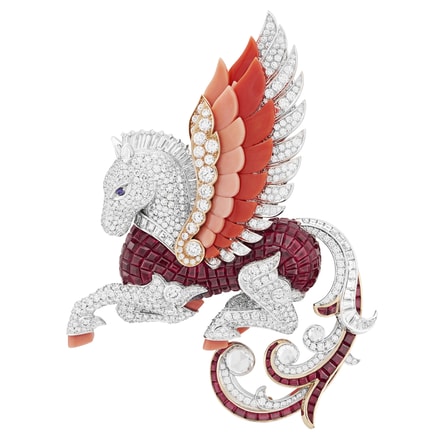
Feathers were already being used on necklaces in the pre-Columbian Nazca civilization dating back to the first millennium B.C.E. They subsequently appeared on aigrettes worn by maharajahs and tiaras worn by members of European high society in the nineteenth century. Shells, horn, and shagreen were also part of a bestiary that brought jewelry and natural history closer together.
From the Mughal Empire to Japan, China, and the West, the work of creators of high jewelry came to resemble that of scientists seeking to identify and depict fauna. Minute observation was as necessary as the skilled hand of the craftsman in bringing a jewel to life. Examples abound among the designs of French goldsmith and jeweler Lucien Gaillard (1861-1942), a champion of Art Nouveau jewelry with a passion for entomology. Indeed, the insects in his pieces rattled the traditional materials of the jewelry world.
An unlimited source of inspiration ranging from the wild creatures of the bush to household pets, fauna generates ties resembling an exquisite form of biomimicry. This is especially true of the features of birds, including the peacock’s bluish coat and ocellated train and the kingfisher’s colorful plumage, among others.
Join us on March 16, 2023 and nurture the animal spirit within you!
With Caroline Benzaria, Art Historian, art critic and independent journalist & Inezita Gay-Eckel, Jewelry Historian and Professor at L’ÉCOLE, School of Jewelry Arts.
Thursday, March 16th at 8:00 pm (Japan time),
in English with simultaneous translation in Japanese, Cantonese and Mandarin.
Photo: Van Cleef & Arpels, Pegasus Clip, rose gold, white gold, purple sapphires, rubies, coral, diamonds, 2016, "Noah's Ark" Collection, © Van Cleef & Arpels
